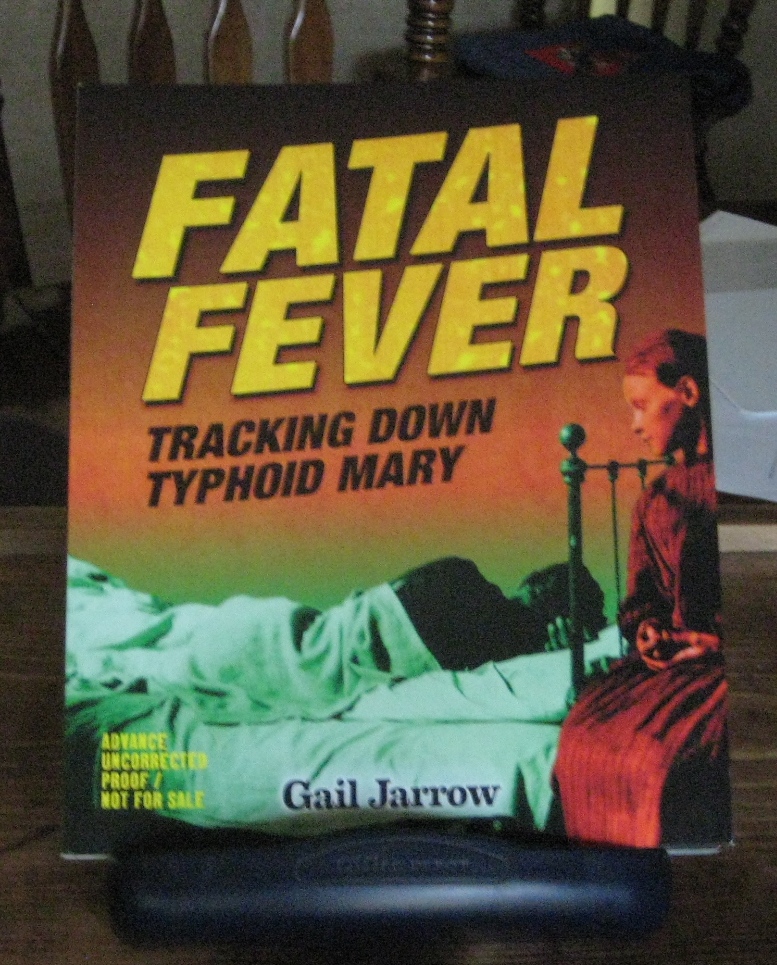 Books are colored by what the reader brings to them. Seldom has this been more true for me than with Fatal Fever by Gail Jarrow. Fascinated by the story of Typhoid Mary as a child, I wondered how they zeroed in on her as the culprit for the spread of the disease. I also heard Mama’s story of taking turns with my grandfather sitting up at night with her younger teenaged sister in the throes of typhoid fever. Her mother, already in poor health, needed whatever rest she could get to take care of the other four children. Aunt Dee was so ill that word got out that she had died, and neighbors began showing up with obligatory Southern funeral food. Thankfully, that report was untrue, and she recovered.
Books are colored by what the reader brings to them. Seldom has this been more true for me than with Fatal Fever by Gail Jarrow. Fascinated by the story of Typhoid Mary as a child, I wondered how they zeroed in on her as the culprit for the spread of the disease. I also heard Mama’s story of taking turns with my grandfather sitting up at night with her younger teenaged sister in the throes of typhoid fever. Her mother, already in poor health, needed whatever rest she could get to take care of the other four children. Aunt Dee was so ill that word got out that she had died, and neighbors began showing up with obligatory Southern funeral food. Thankfully, that report was untrue, and she recovered.
Naturally, I jumped at the chance when Calkins Creek offered an advance reading copy. (Release date – March 10) In great detail, Gail Jarrow satisfied my curiosity. The subtitle, “Tracking Down Typhoid Mary” presages the detective work involved in finding her. Not wanting to be found and slippery as black ice, she led scientists and doctors on a not-so-merry chase.
Gail leads the reader in a fascinating mystery with many twists and turns. Reader sympathy lies with Mary, her victims, and the heroes of the story – scientist George Soper, physician Josephine Baker, and health department officials. The sympathy is tempered with wondering if all of them could have handled this bad situation with more compassion. Along with the resolution of the mystery, the cautionary tale of the importance of hand-washing will remain with me for a very long time!
The book is riddled with questions. What causes typhoid fever and how is it spread? Why do mysterious pockets of the disease suddenly show up in areas away from any known cases? How can a person showing no symptoms be a carrier for the disease? Where do Mary’s rights end and those of the community begin? Why was she singled out when other equally dangerous carriers were allowed to go free? What is the status of the disease in today’s world? The author answers the questions for which there are answers and leaves the rest for the reader to ponder.
The book is designed for middle schoolers, but as is my custom, I would suggest that we not let them have all the fun. I did put myself in their place when I read the first line of the last chapter, “Mary Mallon despised her nickname . . .”
Like any normal middle-schooler, I responded, “Y’think?”